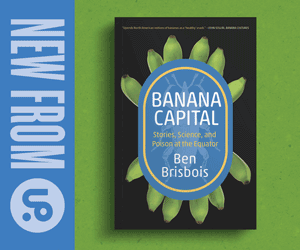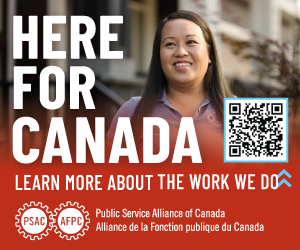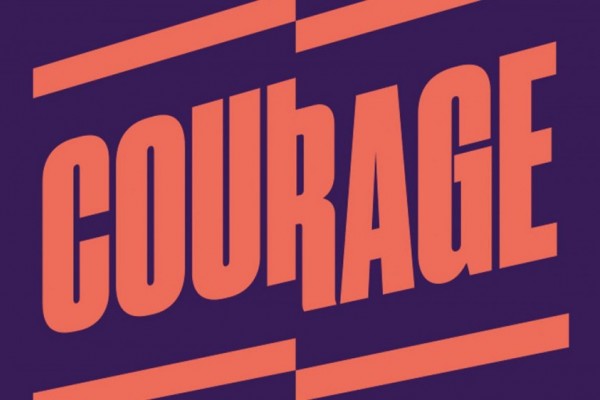Canadian popular history suppresses memory of activism
The silencing of histories of collective struggle in popular memory only helps to naturalize the social stigma around activism

Members of the Abortion Caravan demonstrate in front of Parliament Hill, Ottawa, 1970. Photo courtesy uOttawa Archives and Special Collections
Pretty much everything that we might find redeemable about Canadian society has come as a result of community-based struggles and social movements. Yet, most people have little awareness of the historical significance of collective action because public memory practices rarely recollect, never mind detail, histories of activism.
In response to Trump’s threats to annex Canada, actor and filmmaker Mike Myers warmed many hearts with his romantic construction of Canadian exceptionalism. Like no other nation, he claims, Canada has “tried to get it right.” Yet, worker safety standards, environmental regulations, or access to abortion services, among a myriad of other programs, institutions or ‘rights’ that might provide evidence of this claim, have only come about due to organized pressure on governments. And they are continually under threat by the neoliberal austerity programs implemented over the past few decades by Conservative and Liberal governments alike. As Nora Loreto argues in her recent book The Social Safety Net, “our condition has declined, but our myths have yet to catch up.”
In the introduction to Resisting the State: Canadian History Through the Stories of Activists, Scott Neigh reflects on how Canadian popular history does not provide “a sense of the legacy of struggle by workers and people of faith, the actions and political courage and sacrifice” that made possible, for instance, socialized medical care. Rather, the fairy tale produced through public memory in Canada presents such institutions as natural characteristics of a benevolent nation. Hence, stories of activism are largely suppressed in popular narratives of Canadian history.
BC schools teach students about rights but not collective action
For instance, if you complete your schooling in British Columbia, you will not learn much about movements for social change, if at all. References to social movements or grassroot movements appear only four times in the social studies curriculum documents. Similarly, the terms “protest” or “activist/activism” appear only four times each.
The Canadian media and government have spent the last 16 months, and more, demonizing campaigns to boycott Israel. In the last few weeks alone, though, since Donald Trump launched his trade war, boycotting has become reimagined as a righteous, patriotic act. Neither “boycott” nor “strike” appear in the BC social studies curriculum, though organized labour has been crucial for creating the living standards that many people in Canada enjoy. If you do your schooling in BC, you definitely will not learn about “civil disobedience” or “nonviolence.” Further, the term “resistance” appears only twice, both references in the curriculum document for the optional First Peoples 12.
In contrast, “freedom/freedoms” and “justice” appear in almost all of the social studies curriculum documents, and the term “rights” appears 78 times. However, the curriculum does not invite teachers to present the historical struggles for those rights, never mind how the goals of social justice movements have been channelled into rights-based frameworks. Rather, the focus on rights reinforces individualism and teaches that those rights just sort of evolved over time.
Students in the BC education system will definitely learn about genocide. That term appears 21 times in the curriculum documents for the required grade 11 social studies alone. And there is a separate, optional course, Genocide 12. Yet, the term “discrimination” appears only 12 times in all of the curriculum documents, and not at all after grade 10. And the term “oppression” does not appear at all, even in the course Social Justice 12. Hence, there is little indication that students will learn about struggles against discrimination or oppression here or in other countries.
This data is all the more stark because teachers cannot include all of the possible content listed in the documents. So, even in the rare instances that social movements, activism, or protest are referenced, teachers may choose not to teach about those ideas and histories. And, if they do, what knowledge and understanding can they draw upon, considering how little they would have learned in their education programs or during undergraduate studies at university?
Lamenting ‘past’ oppressions, romanticizing individuals
If the education system erases histories of activism, museums or Historica Canada’s Heritage Minutes series only acknowledge shameful histories of violence, and fashion heroic individuals as rights defenders.
Like many museums in Canada, Kelowna’s Okanagan Heritage Museum has significantly revised its permanent exhibit in the past decade, in response to the Truth and Reconciliation Commission’s Calls to Action. The museum now acknowledges some aspects of settler colonial violence. For instance, it recently introduced a timeline of the colonial displacement of the Syilx Okanagan peoples to reserves. The timeline simply notes that in 1910, “Chiefs of the Shuswap, Okanagan and Couteau tribes address Sir Wilfred Laurier.” It does not provide the chiefs’ letter or the context that would clarify that it was an act of resistance.
However, as detailed by Shirley Louis in Q’sapi: A History of Okanagan People as Told by Okanagan Families, and by Jeannette Armstrong, Delphine Derickson, Lee Maracle and Greg Young-Ing in We Get Our Living Like Milk from the Land, the Indigenous communities of the region threatened war, among other forms of resistance to colonial occupation. Without that resistance, the meagre and unjust allocation of reserves by the Crown might not exist at all. And without acknowledging that history of Indigenous resistance, Canadians create a skewed story of settlement.
Only 11 of the 102 Heritage Minutes produced since 1990 address histories of activism, compared to 12 that focus on sports and 19 on war. Of those 11, only three allude to how people worked in community to struggle for social justice: the underground railroad, a veterans’ campaign for housing, and a depression-era hospital that is presented as an initial step towards universal health care. The others focus on the individuals who helped establish pensions, women’s suffrage, and penal reform, for instance. As romanticized tales of individual perseverance, these vignettes simplify histories of struggle and also hide the way these efforts towards the welfare state, as Loreto argues, served the interests of white Christian Canadians.
In the Canadian Museum of Human Rights’ (CMHR) “Canadian Journeys” exhibit, a series of alcoves acknowledge difficult histories such as the internment of Japanese Canadians and the Residential School system. These displays are juxtaposed with exhibits presenting Viola Desmond’s challenge to segregation in Nova Scotia or the adoption of same sex marriage rights.
While the museum presents histories of violence and oppression as shameful chapters in Canada’s past, resistance to injustice is presented, overwhelmingly, through stories of inspirational individuals, or “upstanders.” In the words of the CMHR, “An upstander is a person who recognizes injustice, knows their personal strengths and uses those strengths to create change.”
Past histories of social movements tend to be more acceptable than current activism. But popular history is constructed in ways that limit depth and nuance. As Angela Davis notes, in North America everyone has heard of Martin Luther King Jr., but they typically only know that he “had a dream.” The CMHR’s focus on iconic “upstanders,” like King, Desmond, or Malala Yousafzai, presents social change as the result of the resilience, compassion, and courage of exceptional individuals.
Davis argues that such a focus limits our ability to recognize the “collective subject of history that was itself produced by radical organizing.” She emphasizes the way a “collective consciousness” emerges within the context of organized social justice struggles, allowing “social realities that may have appeared inalterable, impenetrable… to be viewed as malleable and transformable.”
The CMHR is not devoid of stories of social movements, such as the current temporary exhibit, “Love in a Dangerous Time: Canada’s LGBT Purge.” But the museum’s permanent galleries focus more on the abstract ideal of human rights and detailing historical violence than on examining the collective action that exposed and challenged that violence. As the CMHR’s promotional videos reinforce, the museum’s purpose is to inspire visitors with stories of individual resolve rather than educate them about the accomplishments of organized communities.
Actual histories are more valuable than hockey analogies
Of course, archives and histories of struggles for social justice do exist. Neigh’s books and Talking Radical Radio provide one example. Canadian Dimension has been a crucial site for chronicling these movements. And there are many more. But it takes some work to find them, especially as popular forms of history in Canada provide such limited impetus to think about history in terms of social movements. And that makes standing up for social justice all the more daunting.
It is not in the interests of governments or the corporate donors of the CMHR (including banks, mining industries, and telecommunications) to educate the public about histories of resistance to power. Further, as university crackdowns on Palestinian solidarity encampments reveal, protest continues to be discredited by legacy media and criminalized by the state. Indeed, the struggle to ensure the ability to strike, dissent, and fight injustices is, as ever, a crucial one. Yet, the silencing of histories of collective struggle in popular memory only helps to naturalize the social stigma around activism.
Ironically, faced with the threat of annexation from the United States, and the intensified shift to the right in Canadian politics, with all of the damage that will do to the land, building a right relationship with Indigenous peoples, worker rights, and more, Canadians are now desperately in need of the knowledge of these histories of protest and activism. Feel good slogans like “elbows up,” martialling fantasies of developing a nuclear deterrent, or consumer initiatives to “buy Canadian” will not go far in building a collective consciousness that will move us toward something more than a romanticized status quo that only ever benefited the few.
David Jefferess is a settler-situated scholar, who lives and works in unceded Syilx Okanagan territory, teaching at UBC’s Okanagan campus. His research and teaching focus on colonialism and decolonization in relation to humanitarian discourse and public memory in what is currently Canada. Follow him on Bluesky @djefferess.bsky.social.










